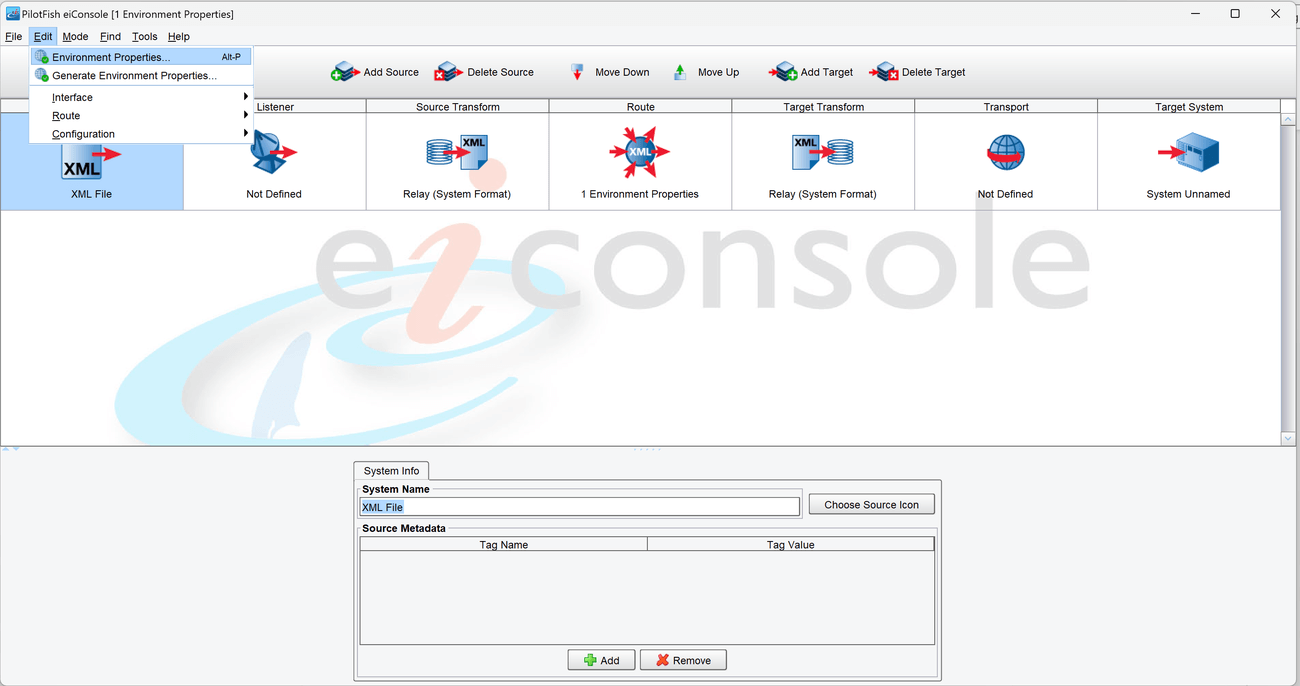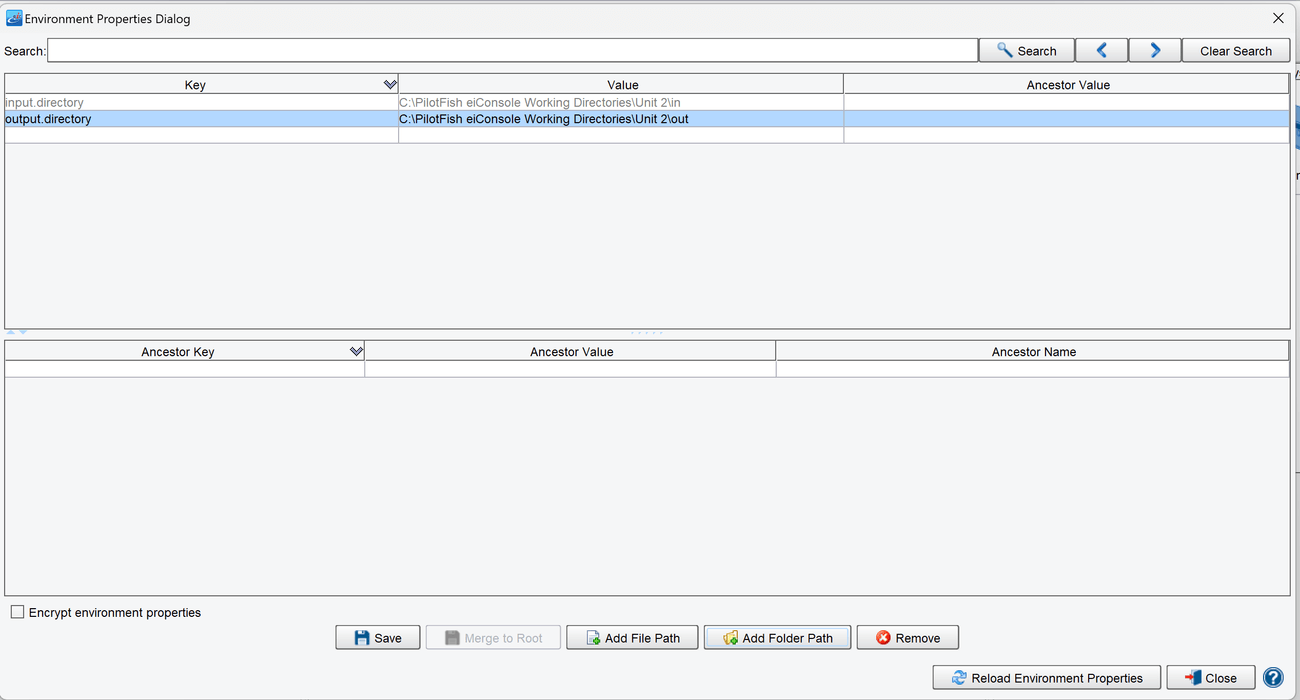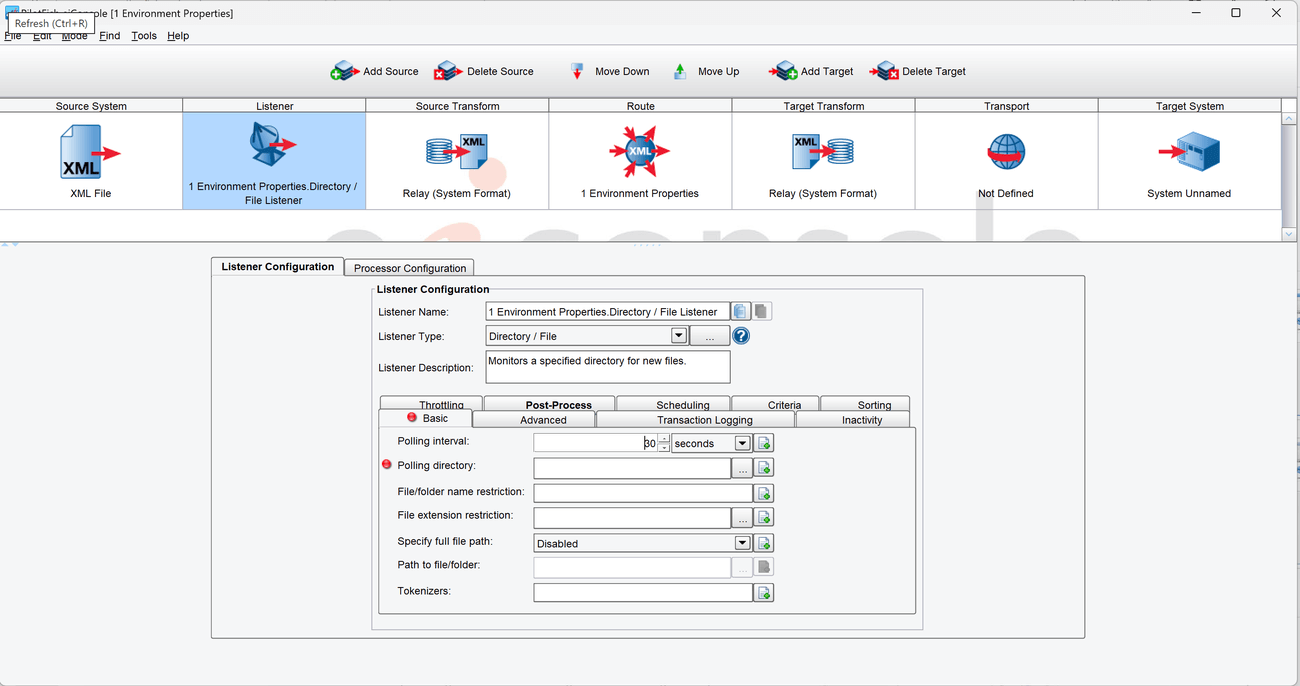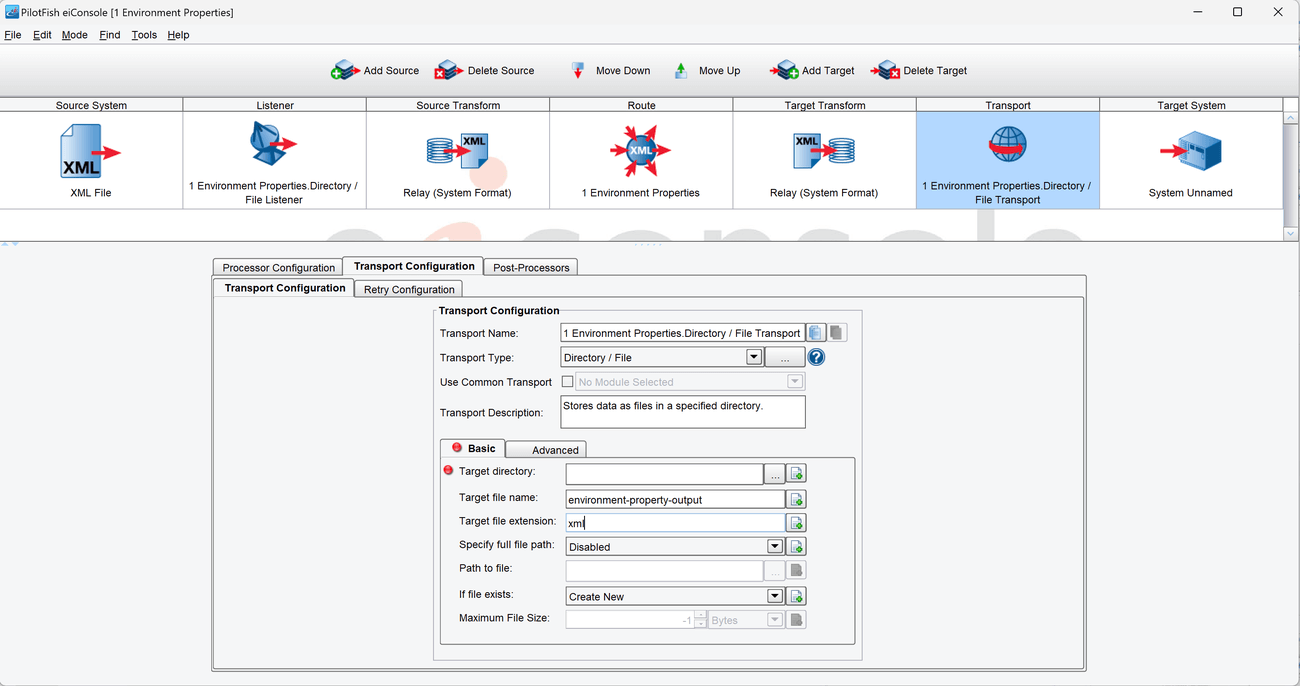Exercise 2.1 – Environment Properties
Purpose:
To practice using Environment Properties when building a Route in the eiConsole.
References:
Create a Route
- From the eiConsole File Management screen, select the Add Route button.
- In the dialog that appears, enter the name Environment Properties and select OK.
- The Route should now appear in the table on the screen. Double-click it to open it.
Document the Source System
- Select the Source System stage in the Route Editing Grid. The configuration panel will appear at the bottom.
- Change the System Name to XML File.
- Select the Choose Source Icon button and scroll down to select one of the XML icons.
Configure Environment Properties
- From the top menu bar, select Edit -> Environment Properties. The Environment Properties Dialog will open.

- All properties will be entered in the top table. The Key and Value cells need to be filled out, the Ancestor Value cell is not editable and will be left blank.
- The first property should have a Key of input.directory. The second property should have a Key of output.directory.
- Select the Value cell of the first property. At the bottom of the dialog, a button called Add Folder Path should now be enabled. Select it to open a file selector and select the directory that will be the input directory for the Route.
- Select the Value cell of the second property and select Add Folder Path to open the file selector. Select the directory that will be the output directory for the Route.

- Select the Save button at the bottom of the dialog to save the changes. Select the Close button to close the dialog.
- From the top menu bar, select Edit -> Environment Properties. The Environment Properties Dialog will open.
Initial Listener Configuration
- Select the Listener stage in the Route Editing Grid. The configuration panel will appear at the bottom.
- Select Directory/File from the Listener Type selection box. Optionally, click the … button to open the Module Search Dialog, which provides a faster way to find the module you’re looking for.
Configuring Listener Polling Directory with Environment Properties
- For the Polling Directory, choose the button on the very far right of the field to open the Enhanced Settings panel. New buttons and a new text field should appear.

- Look at the new buttons, one of them has an icon of a notepad on it. This is the Environment Properties button. Select it to open the Environment Properties Dialog.

- In the Environment Properties Dialog, select the input.directory property row and click the Select button at the bottom.

- The Polling Directory field is now populated with the value of the Environment Property.

- Go to the Post-Process tab and select Delete from Postprocess Operation:
- For the Polling Directory, choose the button on the very far right of the field to open the Enhanced Settings panel. New buttons and a new text field should appear.
Initial Transport Configuration
- Select the Transport stage in the Route Editing Grid. The configuration panel will appear at the bottom.
- Select Directory/File from the Transport Type selection box. Optionally, click the … button to open the Module Search Dialog, which provides a faster way to find the module you’re looking for.
- Set environment-property-output as the Target File Name.
- Set xml as the Target File Extension.

Configure the Transport Target Directory with Environment Properties
- For the Target Directory, choose the button on the very far right of the field to open the Enhanced Settings panel. New buttons and a new text field should appear.
- Look at the new buttons, one of them has an icon of a notepad on it. This is the Environment Properties button. Select it to open the Environment Properties Dialog.
- In the Environment Properties Dialog, select the output.directory property row, and click the Select button at the bottom.
- The value of the property is now populated as the Target Directory.
Document the Target System
- Select the Target System stage in the Route Editing Grid. The configuration panel will appear at the bottom.
- Change the System Name to XML File.
- Select the Choose Target Icon button, and scroll down to select one of the XML icons.
Prepare to Test the Route
- In the menu bar at the top, select Mode -> Testing Mode. Make sure the changes to the Route are saved.
- Copy the file called people.xml from the Samples directory provided into the directory chosen as the polling directory.
Perform the Route Test
- At the top of the Testing Mode screen, select the Execute Test button.
- If the Route was configured successfully, all the stages should light up with green checkmarks.
- In the OS File Explorer, open the directory selected as the Target Directory. The file environment-property-output.xml should be there, with contents identical to the people.xml input file.
Output Files
- Compare the results from the exercise with the following example output files to see if they are correct.






